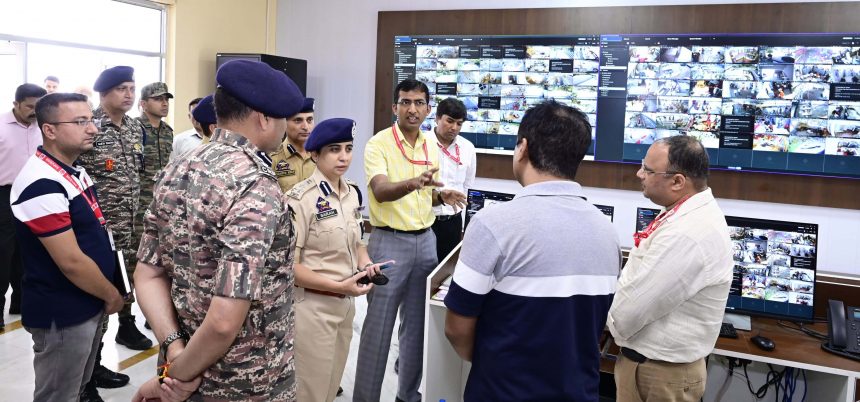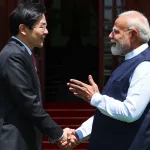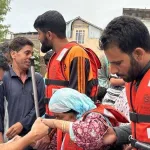Katra, May 22: As per the directives of the Lieutenant Governor Manoj Sinha, Shri Mata Vaishno Devi Shrine Board has operationalised the Integrated Command and Control Centre (ICCC) at the Spiritual Growth Centre, Katra, to enhance pilgrim safety and security. This state-of-the-art facility utilises a network of 700 CCTV cameras equipped with advanced features like gesture recognition, facial recognition and PTZ, enabling real-time monitoring for efficient decision-making and swift response in the Shrine area.
A joint inspection of the ICCC was conducted today by Anshul Garg, Chief Executive Officer, Shri Mata Vaishno Devi Shrine Board, and Sarah Rizvi, DIG Udhampur-Reasi Range, along with the Additional CEO, SMVDSB; SSP, Reasi, Commandant, CRPF; Joint CEO, SMVDSB; SP, Katra; Tehsildar, SMVDSB; and officers from the Army, intelligence agencies, local administration, and the Shrine Board. The inspection was followed by a comprehensive security review meeting to discuss and strengthen various security measures identified in the joint security review conducted last year.
Notably, the ICCC will enhance pilgrim safety and security by leveraging advanced technologies such as surveillance systems, data analytics, and communication networks. A joint team from the Shrine Board and security agencies is now conducting real-time monitoring of key areas, including ingress points, movement of pilgrims and service providers, and critical infrastructure on the track—ensuring a seamless and safe experience with prompt emergency response and improved situational awareness. The security review meeting called for action on multiple fronts, and crucial decisions were taken to ensure a hassle-free pilgrimage, including the issuance of fresh UHF cards to pithoos and ponywalas, and the installation of readers to prevent impersonation and ensure their legitimate presence on the track.
The meeting also involved an in-depth discussion on identified threats with a focus on devising effective countermeasures to mitigate potential risks. Furthermore, measures were discussed to plug unauthorised ingress points in the Shrine area, thereby strengthening the overall security apparatus for a safer environment for pilgrims. The concerned quarters were directed to undertake the numbering of private shops along the track, facilitating easy identification and reference for security agencies. Emphasis was laid on the early activation of the integrated hotline system to enable seamless communication among stakeholders for swift emergency response and further strengthening of the security infrastructure. The meeting also explored the deployment of additional security personnel, area domination, and the use of drones and other advanced technologies to monitor the Shrine and surrounding areas. The CEO reiterated the importance of effectively utilising advanced security equipment crucial for maintaining robust safety measures. These include X-ray baggage scanners, door frame metal detectors, hand-held metal detectors, and under-vehicle search mirrors, scanners recently procured and installed by the Board in the Shrine area.
The meeting took a stern view of the begging menace in Katra, deeming it a nuisance to pilgrims and a potential security threat. Directions were given to the concerned quarters to strictly curb the practice, with a focus on rescuing and rehabilitating minors by sending them to shelter homes—thereby ensuring a safer and more dignified environment for pilgrims visiting from across India and abroad.








